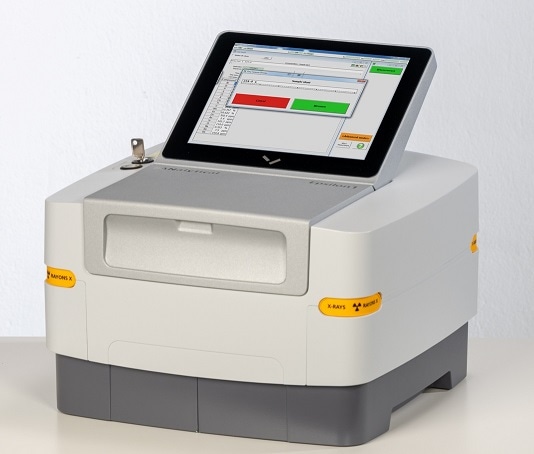The next generation of Epsilon 1 X-ray fluorescence (XRF) spectrometers has been launched today by Malvern Panalytical. This compact yet powerful instrument is a mainstay across industry, enabling fast and reproducible elemental analysis – but now with greater flexibility and precision than ever before.

The comprehensive upgrade has focused on harnessing all the power and sensitivity of a larger benchtop XRF instrument in a truly compact system – the new Epsilon 1 has a footprint of only 0.15 m2. The instrument’s size, along with its robust new design, makes it ideal for use in the field: “With the new generation of our compact Epsilon 1 benchtop XRF spectrometers, you can take a small yet powerful lab directly to your sample for fast product screening and process control”, said Dr. Lieven Kempenaers, Malvern Panalytical Product Manager for benchtop XRF systems. “There are substantial cost-savings associated with both the best-in-class sensitivity and performance of the new system, and also the elimination of sample preparation and transportation requirements.”
The next generation Epsilon 1
The dramatic upgrade to the Epsilon 1’s precision has been enabled by the integration of a high-power X-ray tube and a new detector, which together deliver a threefold improvement in sensitivity, along with rapid measurement capabilities. Trace metals in pharmaceuticals, foods, soils and metal ores can now be quantified more quickly and accurately than ever before in an instrument of this size. The system’s robust design prevents damage to its analytical heart by dust or oil, and ease of operation has also been improved, with the addition of a brighter touchscreen.

For out-of-the-box simplicity and functionality without costly and tedious setup procedures, Epsilon 1 is available in a number of pre-calibrated versions which are dedicated to specific applications. The Epsilon 1 Lube Oil delivers ASTM 6481-compliant elemental analysis of unused lubricating oils; the Epsilon 1 Sulfur in Fuels quickly quantifies sulfur content in fuels according to ASTM D4294-10 and ISO 20847; the Epsilon 1 Academia enables rapid characterization of unidentified samples, using Omnian software for standardless analysis; and the integrated camera in the Epsilon 1 for Small Spot Analysis simplifies the investigation of very small objects, inclusions or inhomogeneities.
“The new generation of the Epsilon 1 will be widely-appealing across all applications, due to its extraordinary performance and enhanced flexibility and ease-of-use,” said Dr. Kempenaers. “The new Epsilon 1 will change the landscape of benchtop XRF spectrometers, with the power and sensitivity previously only seen in much larger and more expensive instruments finally available to all users in a robust, affordable and portable system.”